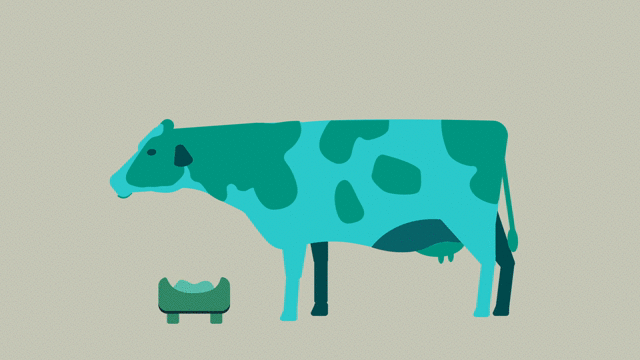Protecting against the threat of toxins to animals
How do minerals help produce a naturally healthier feed source for livestock?

From its mine in Greece, Imerys sources the best quality bentonite for its animal feed product, which is helping tackle a global problem in the agriculture sector.
Climate change, improper agricultural practices and increased global trade are affecting the prevalence of organic toxins in crops and food. These toxins harm the health of farm animals and, as a result, threaten the businesses of livestock producers.
One of these toxins is particularly potent. Aflatoxins, part of the mycotoxins group, are natural mould substances produced from fungi. They are invisible and can be hidden in the grains that make up a feed for all livestock species.
These moulds cause several problems to animals like gastrointestinal issues, liver damage and immune deficiency and often lead to the formation of cancer.
These illnesses can affect the animals’ ability to produce milk, eggs or healthy meat, or to conceive offspring – and farmers are unable to sell unhealthy animals. In the worst-case scenario, mycotoxins can kill the animal. All this has a big financial impact on farmers, but it also raises the concern of human toxicity related to the consumption of contaminated animal products.
A bentonite product that supports the health of livestock and provides safe feed for farm animals
Bentonite is the only material registered by the European Union to combat aflatoxins, due to its content of smectite minerals, like montmorillonite. Specifically, aflatoxins are adsorbed inside smectites while within the animal’s bowel and excreted through the faeces. However, not all bentonites have the same aflatoxin adsorption capacity.
For animal feed, Imerys transforms bentonite from its mine in Milos, Greece, one of the biggest bentonite mines in the world, into a feed ingredient. With different grades available, this optimum grade of bentonite with low heavy metals meets official requirements for feed additives.
Apart from binding toxins, bentonite absorbs water and moisture into the animals’ gastrointestinal system, reducing instances of diarrhoea and consuming more dry matter, leading to faster animal growth.
Another functionality of Smectagri® is an anti-caking agent. When feed grains or raw materials used as feed are stored, they sometimes form clumps. Bentonite helps prevent clumps and keeps the free flow of the feed. As a technological additive, Smectagri® acts as a binder, formulating durable pellets.
Mycotoxins and aflatoxins are a huge problem for agriculture, notably the growing of crops and farming of livestock. The public is growing increasingly concerned about the safety and quality of the food that comes from animals. Farmers need an effective and reliable means of securing their animals’ health and, consequently, consumers’ health. From our mine in Greece, we have a consistent supply of high-quality bentonite with the necessary properties to achieve the best performance, both as an aflatoxin binder and as a technological additive in animal feed.
Lia Deligianni
What are mycotoxins and aflatoxins?
Mycotoxins are naturally occurring toxic compounds produced by fungi all over the world. There are more than 300 known mycotoxins, but aflatoxins are particularly poisonous and considered among the most harmful to humans and animals.
Aflatoxins thrive in soil, hay, grains and dead or decaying vegetation. They are native to hot and humid climates – but climate change has resulted in the spread of many mycotoxins to new locations, increasing the threat to the agricultural sector.
Aflatoxins can be found in peanuts, corn, rice, dried foods, spices and crude vegetable oils – but they may also be present in milk and meat from animals who have consumed contaminated feed. Because most mycotoxins are chemically stable, food processing does not mitigate the risk.




